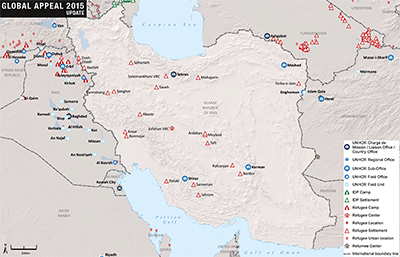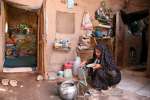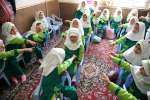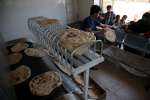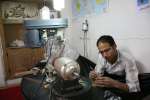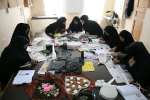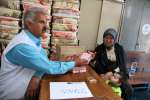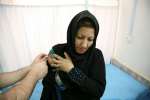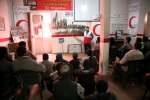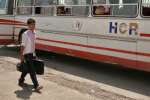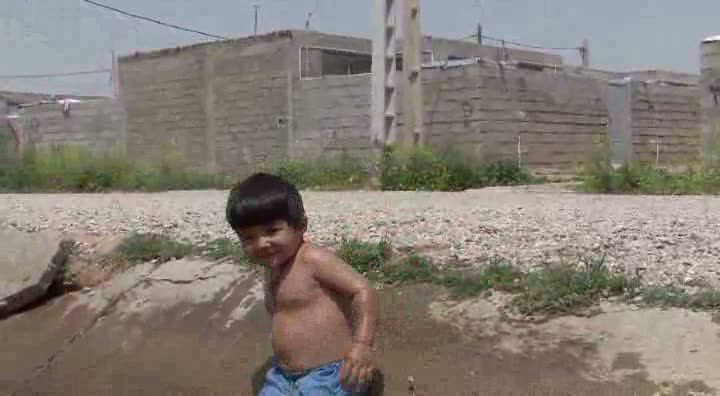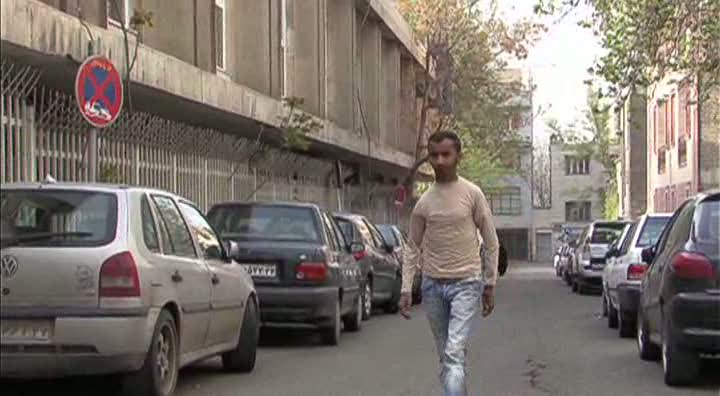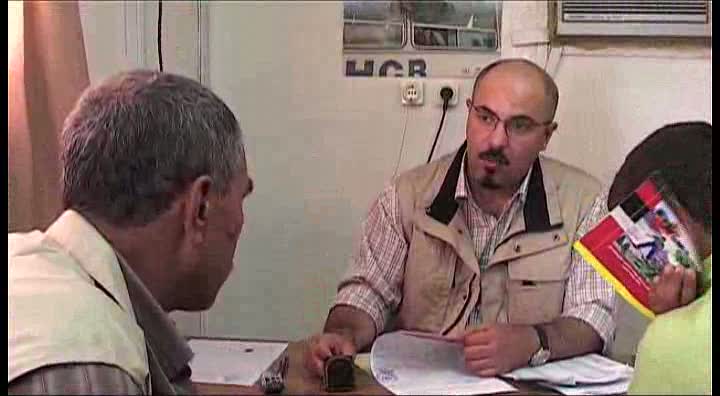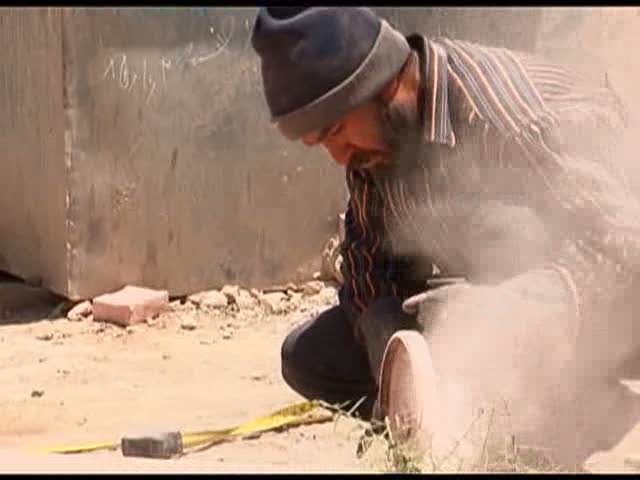Home > Where We Work > Asia and the Pacific > South-West Asia > Islamic Republic of Iran
2015 UNHCR country operations profile - Islamic Republic of Iran
| Overview |
Working environment
-
Despite the voluntary return of hundreds of thousands of Afghan and Iraqi refugees to their countries of origin during the past decade, the Islamic Republic of Iran remains host to one of the world's largest and most protracted refugee populations.
-
Between January 2002 and June 2014, UNHCR assisted 918,263 Afghans in voluntarily returning home from the Islamic Republic of Iran. A total of 30,349 Iraqi refugees have been assisted to repatriate voluntarily since 2003. However, the number of people who have returned in 2013-2014 is lower than in previous years, so they require continued assistance.
-
The global economic downturn, removal of subsidies, and intensified international sanctions have caused hyperinflation, affected the delivery of basic services, and resulted in a dramatic rise in living costs in the Islamic Republic of Iran. Some 24 per cent of registered refugees are considered vulnerable, a rate that is expected to increase due to the economic situation.
-
Sanctions also continue to negatively impact UNHCR's ability to provide humanitarian assistance in an effective and timely manner. High inflation rates have substantial consequences for both the operation and partners.
-
The Government of the Islamic Republic of Iran plays an active role in the Solutions Strategy for Afghan Refugees (SSAR). This strategy promotes a holistic approach to enhancing prospects of sustainable returns and attaining a permanent solution for the protracted refugee situation.
-
The Government is the primary contributor to the country's refugee programmes through its ministries. Additional support is provided through semi-governmental organizations and social charities.
People of concern
The main populations of concern to UNHCR in 2015 in the Islamic Republic of Iran include Afghan refugees, the majority of whom arrived before 2001 as prima facie refugees. About 97 per cent of the country's refugees live in rural and urban areas; only three per cent live in settlements. Following the comprehensive registration programme of refugees in 2001, all Afghan asylum-seekers are required to have their refugee status determined on an individual basis through the government refugee status determination (RSD) procedure.
Also of concern are Iraqi refugees, most of whom were registered in 2002 as prima facie refugees. New Iraqi asylum-seekers are now also required to have their refugee status determined individually through the government RSD procedure. The majority of newly arrived Iraqi refugees originate from central Iraq.
| UNHCR 2015 planning figures for Islamic Republic of Iran | |||||
|---|---|---|---|---|---|
| Type of population | Origin | January 2015 | December 2015 | ||
| Total in country | Of whom assisted by UNHCR |
Total in country | Of whom assisted by UNHCR |
||
| Total | 982,120 | 982,120 | 982,120 | 982,120 | |
| Refugees | Afghanistan | 950,000 | 950,000 | 950,000 | 950,000 |
| Iraq | 32,000 | 32,000 | 32,000 | 32,000 | |
| Pakistan | 10 | 10 | 10 | 10 | |
| Various | 60 | 60 | 60 | 60 | |
| Asylum-seekers | Afghanistan | 40 | 40 | 40 | 40 |
| Pakistan | 10 | 10 | 10 | 10 | |
| Response |
Needs and strategies
The organization will aim to bolster the country's asylum space by supporting the Government, and will support building refugees' human capital in preparation for a sustainable return to their country of origin or to a third country.
The programme focuses on health, education, livelihood generation and durable solutions. Hence, projects will empower refugees to contribute to reconstructing Afghanistan and facilitate their reintegration upon eventual return. The implementation of cross-border initiatives will help prioritize projects and initiatives to increase their impact.
UNHCR will enhance its interventions in urban areas, where most vulnerable refugees reside. Future interventions in settlements will take into account the urgency of assistance, cost-effectiveness, and protection concerns. Interventions in settlements will be streamlined to ensure assistance does not become a pull-factor increasing the population, but rather improves the standard of living of existing residents and promotes peaceful coexistence with host communities.
| Implementation |
Coordination
The Bureau for Aliens and Foreign Immigrants' Affairs, which has the overall responsibility for coordinating refugee affairs in cooperation with other line ministries, remains UNHCR's main partner when implementing activities and coordinating with other actors.
The Office will continue to coordinate with WFP to support vulnerable refugees in settlements with food.
With UNIDO, the Technical and Vocational Training Organization, Forest Range and Watershed Management Organization, Nippon International Cooperation for Community Development and World Relief Foundation, UNHCR seeks to implement livelihood projects.
Meanwhile, the Ministry of Education will continue to be UNHCR's main partner concerning education; while activities will also be jointly implemented with UNICEF and NGOs.
The Ministry of Health will remain the key actor in providing health services; however, activities for people of concern with specific needs will continue to rely on other implementing partners such as the Organization for Defending Victims of Violence, the State Welfare Organization of Iran, Association for Protection of Refugee Women and Children, Society for Recovery Support, and Iraqi Refugee Aid Council.
| 2015 UNHCR partners in Islamic Republic of Iran |
|---|
| Implementing partners |
| Government agencies: Bureau for Aliens and Foreign Immigrants' Affairs (Ministry of the Interior), Forests Range and Watershed Management Organization (Ministry of Agriculture), Ministry of Education, Ministry of Health, State Welfare Organization of Iran, Technical and Vocational Training Organization |
| NGOs: Association for Protection of Refugee Women and Children, Chain of Hope, Iraqi Refugee Aid Council, Kowsar Scientific and Cultural Foundation, Nippon International Cooperation for Community Development, Organization for Defending Victims of Violence, Rebirth Charity Organization, Society for Recovery Support, Society to Protect Children Suffering from Cancer, World Relief Foundation |
| Others: UNIDO, UNOPS |
| Operational partners |
| NGOs: Association for Protection of Child Labourers, Behnam Daheshpour Charity Organisation, Danish Refugee Council, Humanitarian Ambassadors Organisation, International Consortium for Refugees in Iran, Norwegian Refugee Council, Relief International |
| Others: IOM, UNDP, UNESCO, UNFPA, WFP |
| Financial information |
During the past five years, UNHCR's budget in the Islamic Republic of Iran has gradually increased to better address the needs of Afghan and Iraqi refugees. In 2015, the operation's budget totals USD 73 million, amounting to 6.3 per cent (USD 4.3 million) more than in 2014.
Source: UNHCR Global Appeal 2015 Update
UNHCR contact information
| The UNHCR Representation in the Islamic Republic of Iran | |||||||||||||||
|---|---|---|---|---|---|---|---|---|---|---|---|---|---|---|---|
| Style of Address | The UNHCR Representation in the Islamic Republic of Iran | ||||||||||||||
| Street Address | No 3, East Emdad Street,, Vanak Sq, North Shiraz Ave., 1991775941 Tehran, Iran (Islamic Republic Of) | ||||||||||||||
| Mailing Address | No 3, East Emdad Street,, Vanak Sq, North Shiraz Ave, 1991775941 Tehran, Iran (Islamic Republic Of) | ||||||||||||||
| Telephone | 98 21 429 39 | ||||||||||||||
| Facsimile | 98 21 89 349 900 | ||||||||||||||
| Website | http://www.unhcr.org.ir/ | ||||||||||||||
| irnte@unhcr.org | |||||||||||||||
| Time Zone | GMT + 3.3 | ||||||||||||||
| Working Hours |
|
||||||||||||||
| Public Holidays | 03 January 2016, New year 11 February 2016, Victory of Islamic rep of iran 20 March 2016, Nowrooz 1395 21 March 2016, Nowrooz 1395 21 April 2016, Birthday of Imam Ali 22 April 2016, birthday of Imam mahdi 06 July 2016, Eid e fetr 12 September 2016, eid-e- Ghorban 12 October 2016, Ashoora 25 December 2016, Christmas |
||||||||||||||
| The UNHCR Head of Field Office at Dogharun | |||||||||||||||
|---|---|---|---|---|---|---|---|---|---|---|---|---|---|---|---|
| Style of Address | The UNHCR Head of Field Office at Dogharun | ||||||||||||||
| Street Address | Ansar Camp, Dogharoun, Taybad,, Dogharoun, Iran (Islamic Republic Of) | ||||||||||||||
| Mailing Address | Ansar Camp, Dogharoun, Taybad,, Dogharoun, Iran (Islamic Republic Of) | ||||||||||||||
| Telephone | 98 529 425 7355 57 | ||||||||||||||
| Facsimile | 98 529 427 3358 | ||||||||||||||
| Website | http://www.unhcr.org.ir/ | ||||||||||||||
| irndo@unhcr.org | |||||||||||||||
| Time Zone | GMT + 3.3 | ||||||||||||||
| Working Hours |
|
||||||||||||||
| Public Holidays | 03 January 2016, New year 11 February 2016, Victory of Islamic rep of iran 20 March 2016, Nowrooz 1395 21 March 2016, Nowrooz 1395 21 April 2016, Birthday of Imam Ali 22 April 2016, birthday of Imam mahdi 06 July 2016, Eid e fetr 12 September 2016, eid-e- Ghorban 12 October 2016, Ashoora 25 December 2016, Christmas |
||||||||||||||
| The UNHCR Head of Sub-Office at Kerman | |||||||||||||||
|---|---|---|---|---|---|---|---|---|---|---|---|---|---|---|---|
| Style of Address | The UNHCR Head of Sub-Office at Kerman | ||||||||||||||
| Street Address | 42, Hezar-o-Yekshab Ave, Jomhouri Islami Blvd, (In the corner of the third alley), Kerman, Iran (Islamic Republic Of) | ||||||||||||||
| Mailing Address | 42, Hezar-o-Yekshab Ave, Jomhouri Islami Blvd, 7618653588 Kerman, Iran (Islamic Republic Of) | ||||||||||||||
| Telephone | 98 34 32477794 | ||||||||||||||
| Facsimile | 98 34 32477746 | ||||||||||||||
| Website | http://unhcr.org.ir/en/kerman | ||||||||||||||
| IRNKM@unhcr.org | |||||||||||||||
| Time Zone | GMT + 3.3 | ||||||||||||||
| Working Hours |
|
||||||||||||||
| Public Holidays | 03 January 2016, New year 11 February 2016, Victory of Islamic rep of iran 20 March 2016, Nowrooz 1395 21 March 2016, Nowrooz 1395 21 April 2016, Birthday of Imam Ali 22 April 2016, birthday of Imam mahdi 06 July 2016, Eid e fetr 12 September 2016, eid-e- Ghorban 12 October 2016, Ashoora 25 December 2016, Christmas |
||||||||||||||
| The UNHCR Sub-Office at Shiraz | |||||||||||||||
|---|---|---|---|---|---|---|---|---|---|---|---|---|---|---|---|
| Style of Address | The UNHCR Sub-Office at Shiraz | ||||||||||||||
| Street Address | Podonak Street, Shiraz, Iran (Islamic Republic Of) | ||||||||||||||
| Mailing Address | Podonak Street, Shiraz, Iran (Islamic Republic Of) | ||||||||||||||
| Telephone | 98 711 722 9690 | ||||||||||||||
| Facsimile | 98 711 722 9690 Ext 290 | ||||||||||||||
| Website | http://www.unhcr.org.ir/ | ||||||||||||||
| irnsh@unhcr.org | |||||||||||||||
| Time Zone | GMT + 3.3 | ||||||||||||||
| Working Hours |
|
||||||||||||||
| Public Holidays | 03 January 2016, New year 11 February 2016, Victory of Islamic rep of iran 20 March 2016, Nowrooz 1395 21 March 2016, Nowrooz 1395 21 April 2016, Birthday of Imam Ali 22 April 2016, birthday of Imam mahdi 06 July 2016, Eid e fetr 12 September 2016, eid-e- Ghorban 12 October 2016, Ashoora 25 December 2016, Christmas |
||||||||||||||
| The UNHCR Sub-Office in Mashhad | |||||||||||||||
|---|---|---|---|---|---|---|---|---|---|---|---|---|---|---|---|
| Style of Address | The UNHCR Head of Sub-Office at Mashhad | ||||||||||||||
| Street Address | 45, Sajjad Blvd, 9187713994, Mashhad, Iran (Islamic Republic Of) | ||||||||||||||
| Mailing Address | P.O.BOX 91775 - 1876, Mashhad, Iran (Islamic Republic Of) | ||||||||||||||
| Telephone | 98 511 768 5081 | ||||||||||||||
| Facsimile | 98 511 768 3017 | ||||||||||||||
| Website | http://www.unhcr.org.ir/ | ||||||||||||||
| irnma@unhcr.org | |||||||||||||||
| Time Zone | GMT + 3.3 | ||||||||||||||
| Working Hours |
|
||||||||||||||
| Public Holidays | 03 January 2016, New year 11 February 2016, Victory of Islamic rep of iran 20 March 2016, Nowrooz 1395 21 March 2016, Nowrooz 1395 21 April 2016, Birthday of Imam Ali 22 April 2016, birthday of Imam mahdi 06 July 2016, Eid e fetr 12 September 2016, eid-e- Ghorban 12 October 2016, Ashoora 25 December 2016, Christmas |
||||||||||||||

